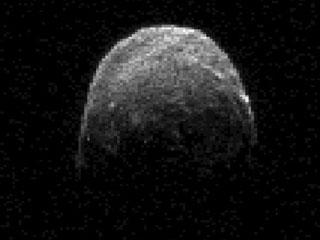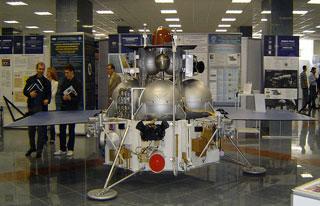
This radar image of asteroid 2005 YU55 was obtained on Nov. 7, 2011. Photo: NASA/JPL/Caltech.
WASHINGTON (PTI): A massive asteroid the size of a city block harmlessly zipped past Earth early Wednesday in a rare flyby that marked the closest approach to the planet by such a big space rock in 35 years.
The 400-meters-wide space rock, called 2005 YU55, came within 201,700 miles (324,600 km) of Earth at 23:28 GMT on Tuesday (about 5 a.m. Wednesday India time) before speeding off into deep space once again at a speed of about 46,700 kmph.
An asteroid of this size has not come so near to Earth since 1976 and won't again until 2028, NASA officials said.
The asteroid encounter brought 2005 YU55 closer than the moon, which orbits Earth at an average distance of 238,864 miles (384,499 km). But there was never any danger that 2005 YU55 would slam into Earth Wednesday.
Scientists eagerly awaited the close encounter all the same, since it's providing an unprecedented opportunity to learn more about the asteroid and its orbit.
"We would really like to characterise it as much as possible, and learn about its past and about its future," said Marina Brozovic, a scientist with NASA's Near-Earth Object Office at the Jet Propulsion Laboratory (JPL) in California was quoted as saying by LiveScience.
Photos and videos of asteroid 2005 YU55 released by NASA just before and during the flyby revealed the space rock to be a relatively round but lumpy object.
Taking advantage of the close encounter, scientists have trained a suite of instruments on the asteroid, including giant radio telescopes in Puerto Rico and NASA's Deep Space Network facility in Goldstone, California. The aim is to get a better idea of 2005 YU55's size, surface features, rotational period and orbit, the researchers said.
2005 YU55 makes one complete lap around the sun every 15 months. Astronomers have already determined that the asteroid poses no threat to Earth for at least the next century, but observations made during this close approach should help them predict its movements even further into the future.
"For many centuries, we'll know exactly where this object is going to be," Brozovic said.
 Previous Article
Previous Article Next Article
Next Article












The Indian Air Force, in its flight trials evaluation report submitted before the Defence Ministry l..
view articleAn insight into the Medium Multi-Role Combat Aircraft competition...
view articleSky enthusiasts can now spot the International Space Station (ISS) commanded by Indian-American astr..
view article